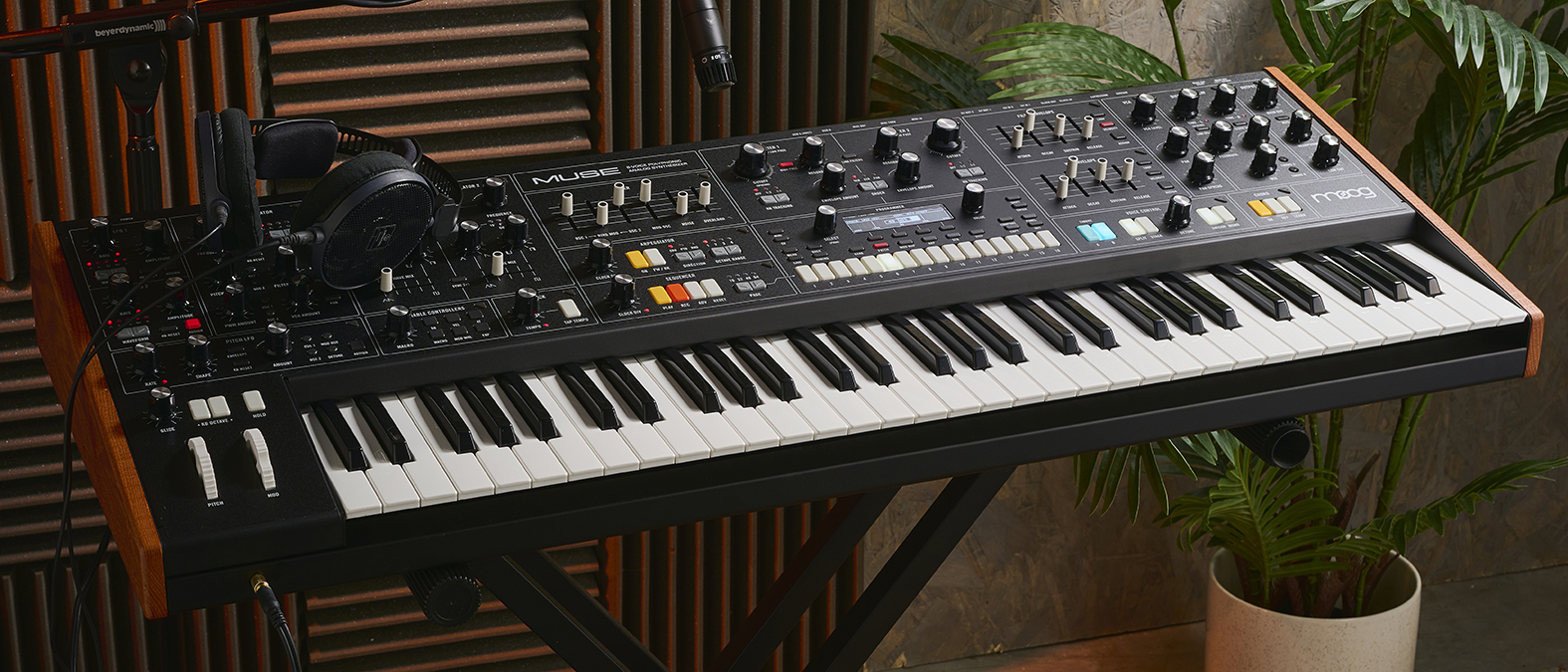MusicRadar Verdict
Muse has its weak points, but it’s also the purest, most characterful poly that Moog has made in recent memory.
Pros
- +
Characterful analogue sound engine with plenty of oscillator options.
- +
Impressive stereo capabilities throughout the sound engine.
- +
Diffusion Delay effect is an absolute joy for hands-on tweaking.
Cons
- -
No polyphonic aftertouch.
- -
Less versatile than some similarly-priced synths.
- -
Only one onboard effect.
MusicRadar's got your back
Moog Muse: What is it?
Back in 2018, Moog released its first proper analogue polysynth in decades – the Moog One. Available in both 8 and 16-voice iterations, the One was a beast of a synth that combined classic Moog analogue elements with digital processing and copious modulation tools. For all that was impressive about the One though, with a price that started at upwards of £5,000 for the 8-voice version, it was out of reach of many musicians – which possibly influenced Moog’s decision to discontinue it.
In its place, we now have Muse – a new flagship at the top of Moog’s synth line. While Muse maintains much of what the Moog One had to offer, including eight analogue voices, a multi-timbral design – reduced from three to two timbral layers – and a similarly flexible approach to modulation, it does dial back the all-bells-and-whistles approach somewhat. Crucially, it also comes in with a price point over £2k lower than the cheapest Moog One; hardly a budget synth, but more competitive in relation to today’s polysynth market.
Visually, Muse has a slightly different style to most Moog synths of recent decades. Where the likes of the Sub-37, One and Minimoog Voyager all share an obvious design lineage with the original 1970s Minimoog, Muse’s chunky plastic buttons and sliders give it a touch of Roland influence, perhaps via Behringer’s Deepmind. To our eye, there’s something a little uncanny about Muse’s aesthetic; it could pass for an unofficial Moog ‘tribute’ as opposed to a genuine Moog poly.
This, utterly subjective, point aside, Muse feels reassuringly solid with sturdy front-panel controls and a semi-weighted Fatar keybed. On this latter point, it’s worth noting that Muse offers channel, not polyphonic, aftertouch. This could either be a dealbreaker or an irrelevance depending on the type of synthesist you are, but it does put Muse at a notable disadvantage compared to some similarly-priced polys. For us, the only real letdowns in terms of Muse’s build are its thin plastic pitch and mod wheels.
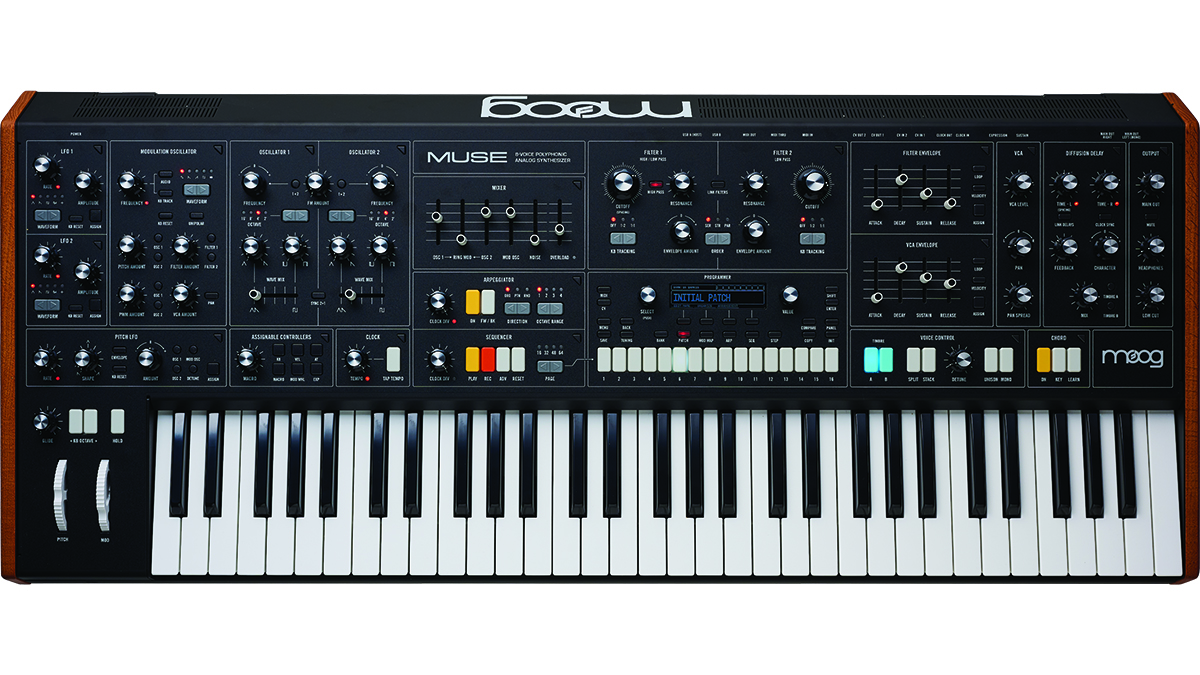
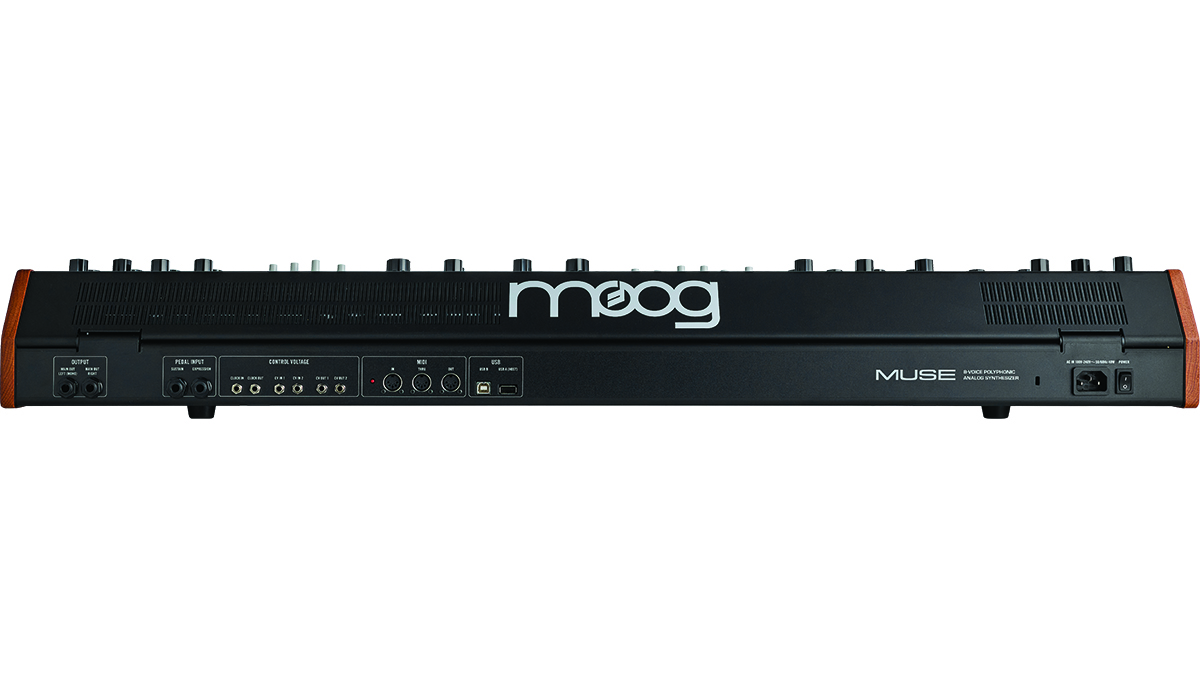
Moog Muse: Performance and verdict
Muse’s sound engine makes use of three voltage-controlled oscillators. Two of these are standard audio-rate VCOs, while the third – much like on Moog’s recent Labyrinth – is labelled as a Modulation Oscillator, and is capable of operating in both audible and LFO ranges.
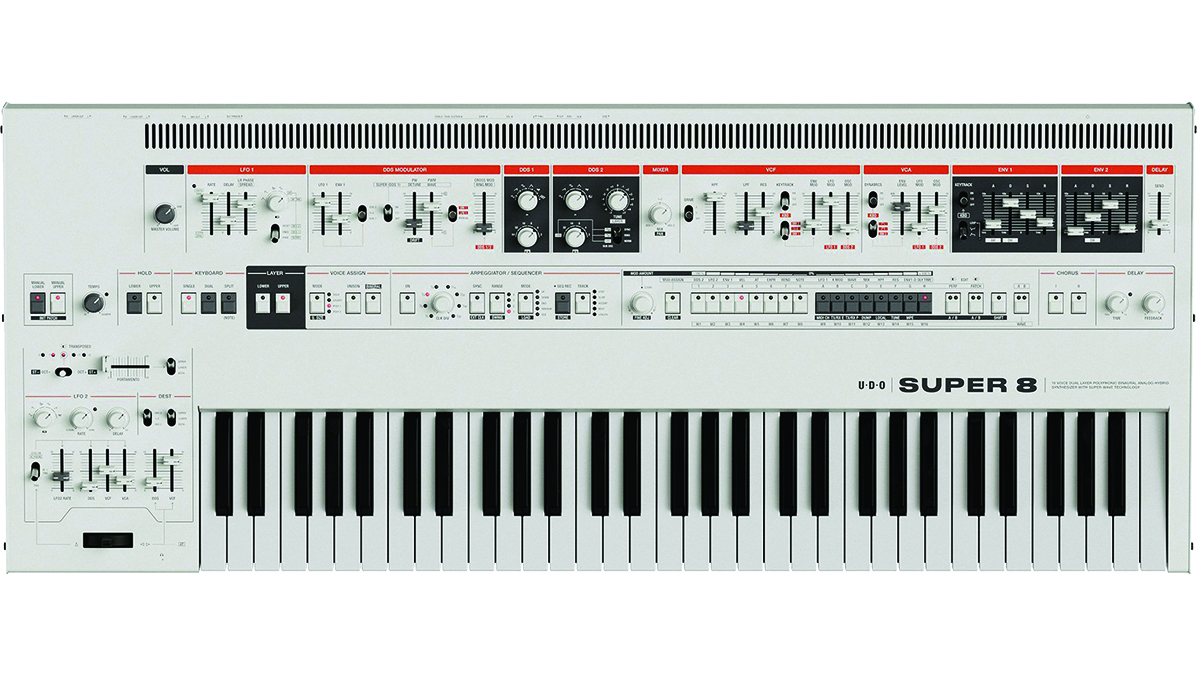
• UDO Super 8
The Super 8 has a similarly binaural approach to Muse with poly aftertouch and more textural range, although lacking some of the analogue heft.
• Arturia PolyBrute 12
Arturia’s poly outdoes Muse on voice count and expressivity, but Muse arguably does a better line in bass and leads.
• Sequential Prophet-5
The latest version of Sequential’s iconic poly has a similarly rich analogue sound, albeit coming with even fewer bells and whistles.
Even the more conventional VCOs offer plenty of flexibility. Each of these has a Wave Mix slider used for blending between triangle/saw and variable pulse outputs, with individual dials for adjusting the shape and width of each. Between these, there’s a nice amount of waveshape control on offer, even before you factor in the ability to modulate those parameters.
It’s worth saying that even at their most ‘vanilla’ – with the mix and dial controls far over to triangle mode – Muse’s oscillators still have a touch of harmonic edge to them. This lack of a pure sine output (although this can be achieved with the mod osc) gives the synth a welcome gritty character from the off. Further heft can be created using the two oscillators’ cross-modulation capabilities, which allow for either oscillator to modulate the frequency of the other, as well as offering a separate ring-modulated output at the mixer stage.
Want all the hottest music and gear news, reviews, deals, features and more, direct to your inbox? Sign up here.
The modulation oscillator takes these capabilities further still. Whether used at audible or LFO rates – selectable via a switch – the modulation oscillator can be routed simultaneously to the pitch of both/either of the oscillators, the cutoff of Muse’s dual filters, provide pulse-width modulation or modulate the VCA level. Using a phase inversion switch, it can also be used to provide stereo width. This oscillator has a choice of five fixed wave shapes, including noise, and options to track and/or be retriggered by the keyboard.
These various oscillator sources, along with a white noise generator, can be combined using Muse’s slider-controlled mixer section. This also includes an additional Overload slider, which overdrives the overall mix in order to create lovely clipping using a circuit inspired by Moog’s 1960s CP-3 module, which emphasises even harmonics.

Muse’s filter section makes use of two resonant ladder filters, the first of which can function in either low- or high-pass modes, the second fixed as a low-pass filter. These filters can be arranged in serial, parallel or stereo modes. When we first read the specs for Muse, we initially thought that having two near-identical filters seemed like a missed opportunity compared to, for example, Arturia’s PolyBrute, which has both Ladder and Steiner-Parker filters with their own distinct character. The stereo mode makes this decision more sensible though, as it allows the synth to create patches with interesting stereo characteristics via variations in the left and right filters.
It’s arguably still a shame not to have a little more filter variation, such as additional options to alter the mode and slope of each filter. A link button does mean that, in serial mode, the two filters can be combined to create a single band-pass, but separate band-pass, band-reject or shelving modes for each filter would have added flexibility. That being said, in typical Moog fashion, the filters sound great, particularly with a slight resonance boost used to add punch and bite to basses and leads.

There are a couple of interesting features in the VCA section that further enhance Muse’s stereo capabilities. The first is a simple Pan control; basic on its own, but when layering two sounds in bi-timbral mode, it effectively allows the user to design binaural patches using two panned layers. The second is a Pan Spread function, which can be used to distribute the synth’s voices across the left and right channels.
Possibly our favourite element of Muse’s design is its Diffusion Delay. This is a digital effect module, inspired by vintage rack delays. It’s capable of creating long delay lines with washed-out, reverb-like density that don’t change in pitch as you alter the delay rate. Individual front panel controls allow for hands-on adjustment of both its left and right channel separately, along with the feedback length, while a Character control applies filtering to shape the frequency of the effect. It uses adjustable bit rates to create lo-fi, gritty tones that sound absolutely fantastic, and it’s endless fun for hands-on tweaking. While having just this single effect module puts Muse at a disadvantage compared to some similarly-priced polys, the sheer character of the effect – and how well it suits the overall sound – makes up for some lack of versatility.

The hands-on approach of the design is one of Muse’s strengths across the board. Most elements of the synth come equipped with chunky rotaries to control the core elements, and where menus are involved, they’re easily accessed using neat buttons appended to the corner of each module. Modulation routing is easy to access too, with the main mod sources all offering simple ‘assign’ buttons that let them be routed to any front panel control. Aside from the modulation oscillator, these sources include two loopable ADSR envelopes, a designated pitch LFO, and two additional, user-customisable LFOs. Modulation can also be routed from aftertouch, velocity, pedal inputs, two CV inputs, the synth’s mod wheel and a dedicated front panel macro knob.
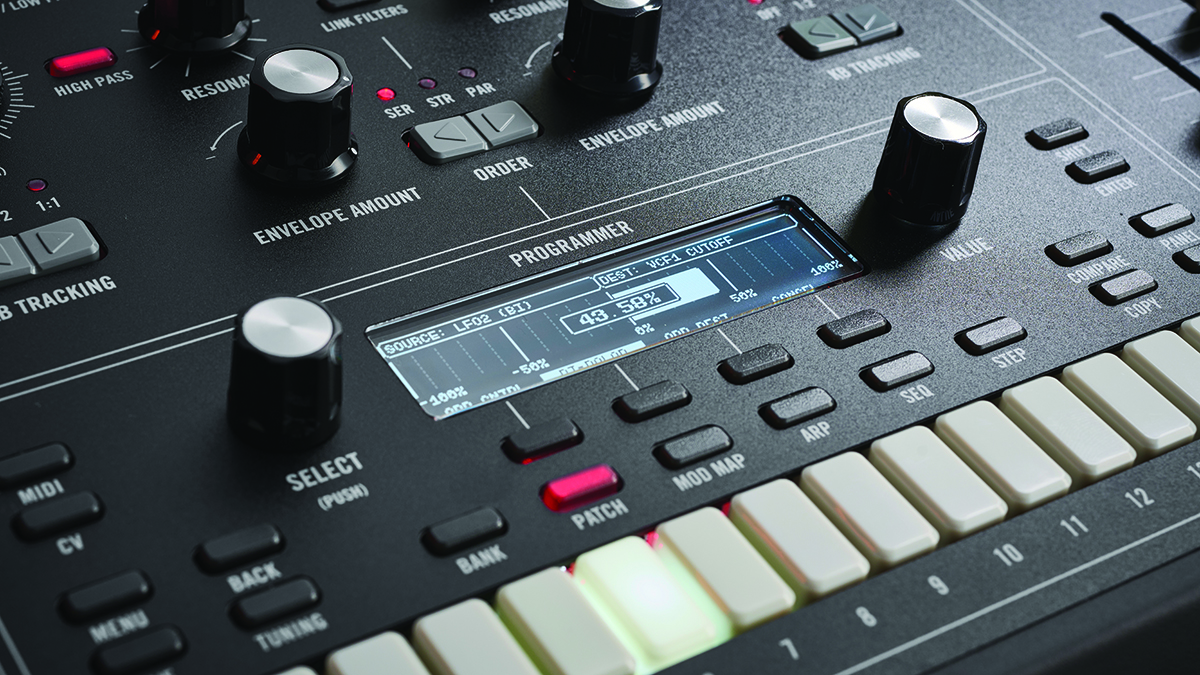
Sequencer tricks
Muse’s sequencer is pleasingly deep. Patterns can be recorded live or step sequenced, with each step capable of recording polyphonic pitch data, velocity, gate length, micro timings and timbre assignment. Each step can also contain automation data for the front panel controls. What’s more, as the sequencer and patch banks exist separately, it's possible for sequence patch changes. The sequencer also offers several varieties of probability. It’s possible to give each step a probability amount, either in uni- or bi-polar ranges above/below the sequenced pitch, which can be fixed to a defined scale. Most interesting though is the Coin Toss lane, which allows the user to program alternative notes or parameters for each step, and then allows Muse to ‘toss a coin’ over which of the versions will be played with each repetition.
Verdict
With its price point just shy of £3k, Muse invites inevitable comparison with a number of other polys. Within a few hundred pounds either way, you have Arturia’s PolyBrute 12, UDO’s Super Gemini, Novation’s Summit, and Sequential’s Prophet-5 and 6, among others.
For Muse’s part, it’s neither the outright biggest-sounding nor the most versatile of the bunch. Several of the synths named above outstrip Muse in terms of voice count, and we’d argue that those that embrace more of a hybrid analogue-digital design offer a wider spectrum of potential sounds. This is particularly evident when layering patches – for all that Muse is capable of, it can’t match the textural intricacies of some rivals. Muse’s stereo capabilities are very impressive, although it must be said, they’re obviously heavily influenced by what UDO has been doing in recent years.
To find where Muse really shines, use its layers to create a split patch with a rich mono bass in the low ranges and a gritty stereo pad playing chords in the octaves above. This might be the purest form of what one hopes to hear when imagining a ‘Moog poly’; rich, characterful and full of life. Unlike the all-guns-blazing One, Muse nails the balance between modern depth and approachable, hands-on design. It’s not perfect, but this could be the source of inspiration you’ve been waiting for.
MusicRadar verdict: Muse has its weak points, but it’s also the purest, most characterful poly that Moog has made in recent memory.
Moog Muse: The web says
"With its considered feature set, tactile control surfaces, and an oh-so-premium analogue sound, Muse has an addictive quality that keeps you coming back for more, and more, and more."
MusicTech
Moog Muse: Hands-on demos
Moog Music
Sanjay C
ANDREW HUANG
loopop
Moog Muse: Specifications
- KEY FEATURES: 8-voice analogue polysynth with stereo signal path, arp, sequencer, chord mode, diffusion delay effect. i/0: 2x 1/4-inch TRS main out, headphone out, sustain and pedal inputs, 2x CV in, 2x CV out, MIDI in, out and thru, analogue clock in and out, 2x USB.
- CONTACT: Moog
I'm the Managing Editor of Music Technology at MusicRadar and former Editor-in-Chief of Future Music, Computer Music and Electronic Musician. I've been messing around with music tech in various forms for over two decades. I've also spent the last 10 years forgetting how to play guitar. Find me in the chillout room at raves complaining that it's past my bedtime.
